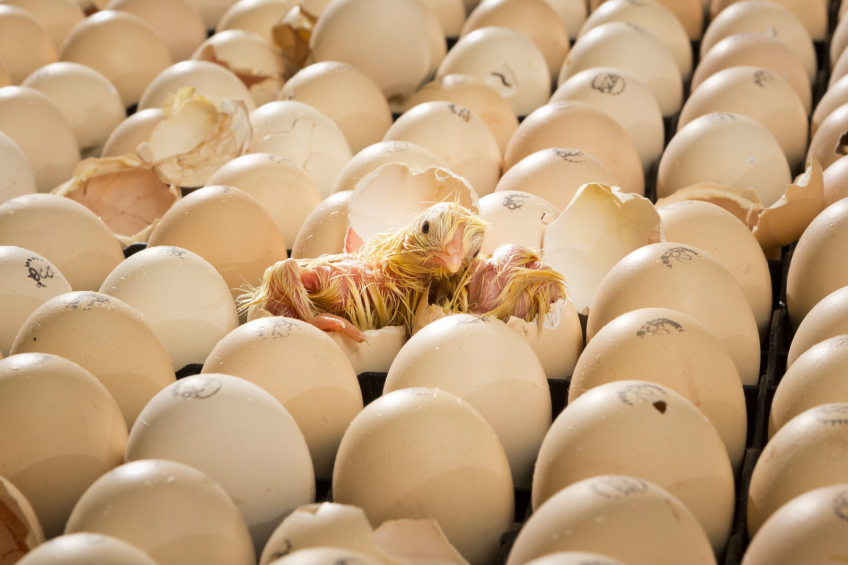Traceability and identification of Russian poultry products

Poultry farming in Russia has a number of features facilitating introduction of a system of traceability throughout the production of poultry products.
In most foreign productions breeding of birds is concentrated on a set of small farms, and slaughter is carried out at the large enterprises. However in Russia, the practice is that breeding, slaughter and production of chicken products, is generally concentrated in uniform farms. Poultry farms are enterprises of ‘closed type’ according to operating veterinary health regulations. Breeding of chickens for slaughter is quite a fast process: from laying the hatching egg to slaughter, less than two months is required. All processes of breeding and processing of a bird are carried out by experts under uniform management and control. Today, poultry farming agroholdings in Russia have the total production cycle in one hand: parental flock, an incubator, youngsters breeding and the management of industrial egg production.
Big demand
The increase in demand for broiler meat caused increased demand for incubatory eggs. Leaders of broiler growing enterprises faced a problem, the shortage of hatching eggs that couldn’t but affect prime cost of the final product. To cope with the extra demand the Russian poultry sector (Figure 1) is following two paths. It is providing commodity farms with incubatory eggs at the expense of domestic production of breeding material (82%) and by deliveries from abroad (18%).
The production technology of eggs in poultry farms and other large specialised agricultural enterprises represents a scientifically reasonable system of successive productions and operations, providing rhythmical production at the minimum expenses of fodders, work, energy resources and other material expenditures. It is based on the use of a hybrid bird with highly productive egg crossbreeds, holding them in capital windowless poultry houses with regulated environmental conditions, feeding compound feeds balanced on a complex of nutrients, application of a complex of technical means.
Safety and monitoring
Safety of eggs and egg products – one of the most serious problems in the modern food industry – has to be continuously monitored. It covers the wide range of questions, such as the contents in poultry products of foreign inclusions, pollution by harmful chemical compounds and especially important – existence of pathogenic microorganisms, causing food poisoning in humans. Recently new safety issues emerged, concerning products of genetically modified materials, and also – in theory – production use from the cloned animals.
It is established that the surface of an egg which has been just laid by an absolutely healthy chicken, as a rule, is contaminated by several species of bacteria. Usually these bacteria are from the environment and excrement of a chicken. If eggs are left at the room temperature, they spoil soon due to activity of the microorganisms getting inside through an egg shell. Certain pathogenic bacteria are always present in eggs if a chicken was infected.
Thus, one of the main difficulties is that bacteria, pathogenic for humans, can live in an organism of the absolutely healthy bird and their identification and actions directed at decreasing contamination, demand considerable efforts and expense (Table 1).
The safety problem, as well as many other problems connected with egg quality, begins with the period of feeding and the keeping of live birds. In accordance with the EU decision to ban cage housing for egg producing chickens, another set of problems has risen. In alternative systems there is a raised level of pollution of the shell by pathogenic and conditionally pathogenic microorganisms in comparison with the eggs derived from cage layers.
To keep pathogens at bay, automation of processing is important. In this case processing of birds and eggs is carried out with minimum physical human contact. Humans play an important role in cross infection during the course of processing. Personal hygiene of the personnel: clean overalls, devices for frequent washing and disinfecting of hands, etcetera should be in place. The correct design for rooms and equipment is important as well as sanitary and hygienic conditions of vehicles which are used for transportation of birds, incubatory and commodity eggs.
Additional value lies in a system of tracking and tracing of a products origin, “from a farm to fork”. A well designed system allows the sources of danger in the production chain to be revealed quickly, and the introduction of necessary amendments.

Russian system
The monitoring system created at the poultry processing enterprises has to be able to completely trace the sequence of the controlled factors caused by the movement of a product and change of its condition. For automation of the control process, an algorithm was developed which will allow finding and preventing the emergence of a dangerous factor in due time. In the modern market more and more rely on the prevention of problems through traceability of meat production by automatic identification. This can only be done by assigning a certain identifier (number or a code) and implementing data read-out from a tag by the digital device and the translation of data of a tag in an electronic form.
As the identifier it is possible to use graphic, magnetic, radio-frequency and electronic tags. All of them are intended for automatic identification (a stroke coding) and finding application in various spheres, but the graphic tag in the form of a bar code is the most common. Application of proper coding allows the tracking of all chains of production of egg products, the information on their quality and to reveal all possible dangers. The system’s safety management should include continuous improvement of processes based on objective measurement and increase satisfaction of consumer needs by means of search and elimination of inconsistencies.












